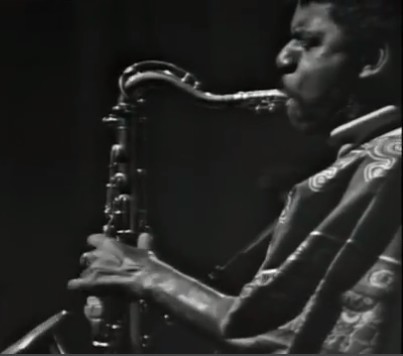Suppose – Roland Alexander
This simple uptempo song has a modal sound even though there is a chord change on every measure. Our exclusive recording has Minus You tracks for all instruments.
- Recording: Taru Alexander - Kojo Time
- Recorded on: September 21, 2014
- Label: jazzleadsheets.com (JLS 1020)
- Concert Key: A-flat, No key center
- Vocal Range: , to
- Style: Swing/Latin (medium up)
- Trumpet - Don Sickler
- Tenor Sax - Elijah Shiffer
- Piano - Ben Rosenblum
- Bass - Marty Jaffe
- Drums - Taru Alexander
Video
- Description
- Historical Notes
- Solos
- Piano Corner
- Bass Corner
- Drum Corner
- Guitar Corner
- Inside & Beyond
- Minus You
Our lead sheets have all the key changes (A♭ to F to D and back to A♭) instead of having no key signature, as the melody certainly suggests these keys.
The horns play in unison throughout the head except in the last four measures of the C section, in which they are voiced in thirds. Instead of having a second part for the arrangement, we show these voicings on all the lead sheets. Our lead sheets can also be used for all the rhythm section Minus You tracks due to this song's straightforward simplicity; there are no special rhythm section "hits," though the basic bass line in the Latin sections is shown.
Don Sickler's relationship with the Alexander family began in the mid-1980s, when Roland assigned several of his compositions to Second Floor Music. Years later, Taru came to the studio and spent many hours rehearsing with the "Young Sounds" group, a program Don was developing for Local 802 of the Musicians' Union. Other musicians in the group included saxophonist Jon Gordon and pianist Bill Charlap.
When Taru came back into the Second Floor Music/jazzleadsheets.com orbit around 2014, he and Don decided to create a project featuring Roland's music and Taru's playing: "Kojo Time" and record it at the Van Gelder Recording Studio.
The C lead sheet can be used by pianists, bassists, and drummers playing along with the rhythm section Minus You tracks. Note that because the form consists of five 8-measure sections, the two choruses of trading 8s with the drums "wrap around" in that the second chorus begins with eight measures of drums.
CLIP Form of the full track:
-- melody
-- trumpet solo two choruses
-- piano solo two choruses
-- trumpet and drums trading 8s two choruses
-- out melody
mp3 minus melody
-- count off sets up the melody
-- play the melody
-- solo two choruses
-- trade eights with the drums two choruses
-- play the out melody
mp3 minus Piano-use the C lead sheet
-- count off sets up the melody
-- comp for the melody (solo at C1)
-- comp for the trumpet solo two choruses
-- solo two choruses
-- comp for trumpet and drums trading eights two choruses
-- comp for the out melody (solo at C1)
mp3 minus Bass--use the C lead sheet or the C bass clef lead sheet
-- count off sets up the melody
-- walk/play line for the melody
-- walk/play line for the trumpet and piano solos (two choruses each)
-- walk/play line for trumpet and drums trading eights two choruses
-- walk/play line for the out melody
mp3 minus Drums--use the C lead sheet
-- count off sets up the melody
-- comp for the melody
-- comp for the trumpet and piano solos (two choruses each)
-- trade eights with trumpet two choruses (trumpet first) [snaps have been added clip]
-- comp for the out melody
MP3 Bass & Drums only By eliminating the comping piano track from the minus melody track, we made a track where the pianist can play the melody and be featured throughout. This bass & drums only track also works great as a feature for guitar or any other instrument (tenor saxophonist Sonny Rollins loved to play with just bass and drums, for example). Perfect for an audition tape.
-- count off sets up the melody
-- play the melody
-- solo two choruses
-- trade eights with the drums two choruses
-- play the out melody
Related Songs
Email Send Suppose to a friend

Roland Alexander
September 25, 1935 – June 14, 2006
Although he never received the credit he was due, the versatile tenor saxophonist Roland Alexander started his career with an unexpected break at age twenty when he made his recording debut—on piano. Born and raised in Boston, Massachusetts, Roland was trained both formally at Boston Conservatory and through day-to-day gig experience, so he was skilled enough to step in when the scheduled pianist (believed to be Red Garland) didn’t make a Paul Chambers session that Roland was observing on April 20, 1956. He was asked to sit in on piano for the blues Trane’s Strain, which was quite a break for the young musician, as the other players on the session were well-known names like John Coltrane, Curtis Fuller, Pepper Adams, and the rest of Miles Davis' current rhythm section, Paul Chambers on bass and Philly Joe Jones on drums. Read more...

